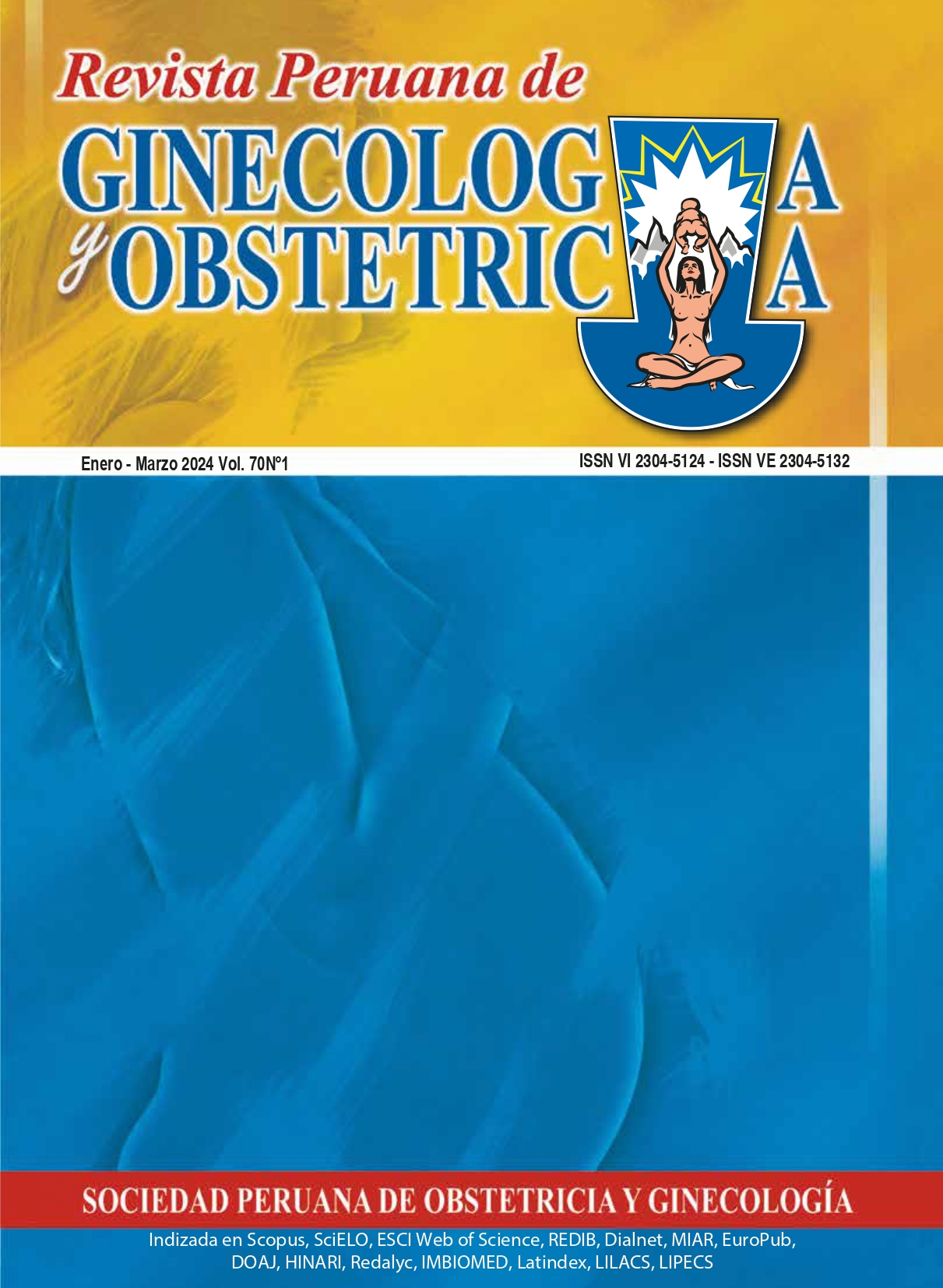Pobreza y desigualdad en el acceso a la salud sexual y reproductiva de las mujeres peruanas
DOI:
https://doi.org/10.31403/rpgo.v70i2595Palabras clave:
Equidad de género, Salud de la mujer, Pobreza, Salud reproductivaResumen
Objetivo. Determinar la influencia de la pobreza en la desigualdad sociogeográfica
del acceso a la salud sexual y reproductiva de mujeres peruanas. Métodos. Estudio
observacional, analítico y ecológico con los datos agregados correspondientes a
Lima Metropolitana, Provincia Constitucional del Callao y 24 departamentos del Perú
registrados para el año 2021 por el Instituto Nacional de Estadística e Informática del
Perú. El análisis incluyó pruebas de correlación, regresión lineal simple y el cálculo
de los índices de Kuznets, índice de concentración de la desigualdad (ICD) y el índice
de desigualdad de la pendiente (IDP). Resultados. La proporción de mujeres que no
usaban métodos anticonceptivos modernos se asoció con la proporción de población
en pobreza monetaria (r=0,448; p=0,022) con una brecha de desigualdad absoluta
de 6,92% y relativa de 1,16 (ICD=0,034; IDP=7,875). La proporción de gestantes
sin atención prenatal por personal de salud calificado y la proporción de partos
sin asistencia de personal de salud calificado se asociaron con la proporción de
población en pobreza no monetaria. Las brechas de desigualdad absoluta y relativa
fueron 5,29% y 8,90 (ICD=0,526; IDP=5,270) para la atención prenatal, mientras que
en la atención del parto llegó a 11,33% y 11,03 (ICP=0,453; IDP=12,440). Conclusiones:
La pobreza no monetaria explicaría las brechas de desigualdad observadas en la
proporción de gestantes sin atención prenatal por personal de salud calificado y
la proporción de partos sin asistencia de personal de salud calificado en mujeres
peruanas.
Descargas
Descargas
Publicado
Cómo citar
Número
Sección
Licencia
Derechos de autor 2024 Jorge Ybaseta-Medina

Esta obra está bajo una licencia internacional Creative Commons Atribución 4.0.
Esta revista provee acceso libre inmediato a su contenido bajo el principio de que hacer disponible gratuitamente la investigación al publico, lo cual fomenta un mayor intercambio de conocimiento global.















